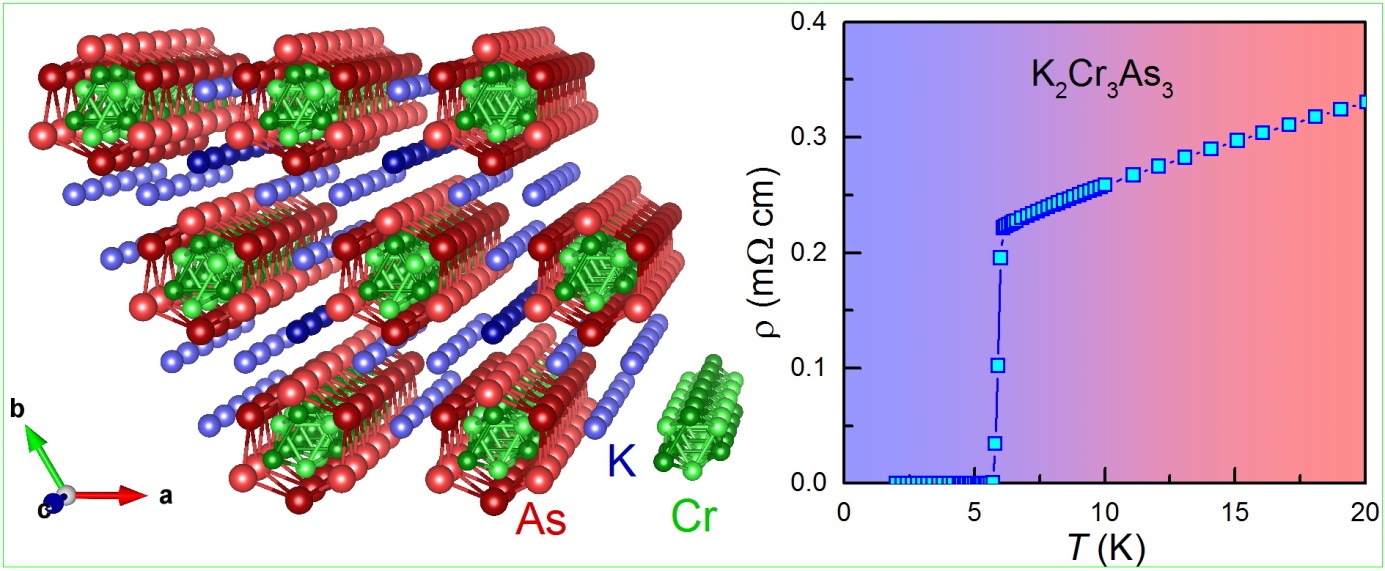Explorations of novel superconductors have been at the forefront of the superconductivity research since the discovery of superconductivity over 100 years ago. The discovery of high-temperature superconductivity in quasi-two-dimensional copper oxides in the 1980s has led to a paradigm that quasi-two-dimensional systems with strongly correlated electrons may host unconventional superconductivity. Indeed, unconventional superconductivity has been discovered in a few classes of layered materials containing d-block elements, including the iron-pnictide high-temperature superconductors being widely investigated in recent years. However, superconductivity rarely emerges in quasi-one-dimensional crystalline systems because of the so-called Peierls instability. Furthermore, realization of superconductivity in quasi-one-dimensional strongly-correlated materials has been pursued for a long time.
The research team at Zhejiang University led by Prof. Cao Guang-Han recently discovered superconductivity at 6.1 K in an alkali-metal chromium pnictide, K2Cr3As3, whose crystal structure contains quasi-one-dimensional [(Cr3As3)2-]¥ double-walled subnanotubes (about 0.58 nm in outer diameter) separated by the potassium
cations. The material bears significantly strong electron correlations, as manifested by a large electronic specific-heat coefficient. Bulk superconductivity is explicitly evidenced by the resistivity drop to zero, the expulsion of magnetic field, and the specific-heat jump. Furthermore, the normal-state resistivity shows a linear temperature dependence in a broad temperature range (7–300 K), suggestive of a possible Luttinger liquid state. The estimated upper critical field exceeds the Pauli paramagnetic limit by a factor of 4, which implies unconventional superconductivity. The finding is expected to expand the research domains in quasi-one-dimensional physics and unconventional superconductivity.
cations. The material bears significantly strong electron correlations, as manifested by a large electronic specific-heat coefficient. Bulk superconductivity is explicitly evidenced by the resistivity drop to zero, the expulsion of magnetic field, and the specific-heat jump. Furthermore, the normal-state resistivity shows a linear temperature dependence in a broad temperature range (7–300 K), suggestive of a possible Luttinger liquid state. The estimated upper critical field exceeds the Pauli paramagnetic limit by a factor of 4, which implies unconventional superconductivity. The finding is expected to expand the research domains in quasi-one-dimensional physics and unconventional superconductivity.
This discovery was published online [Physical Review X 5, 011013 (2015); http: //journals.aps.org/prx/abstract/10.1103/PhysRevX.5.011013]. The first author is Bao Jin-Ke, who is a PhD student of Prof. Cao. The second author is Dr. Liu Ji-Yong, from Department of Chemistry, who contributes significantly on determination of the crystal structure. The research is funded by the National Natural Science Foundation of China, the National Basic Research Program of China (the 973 Plan), and the Fundamental Research Fund for Universities by the Ministry of Education of China.




